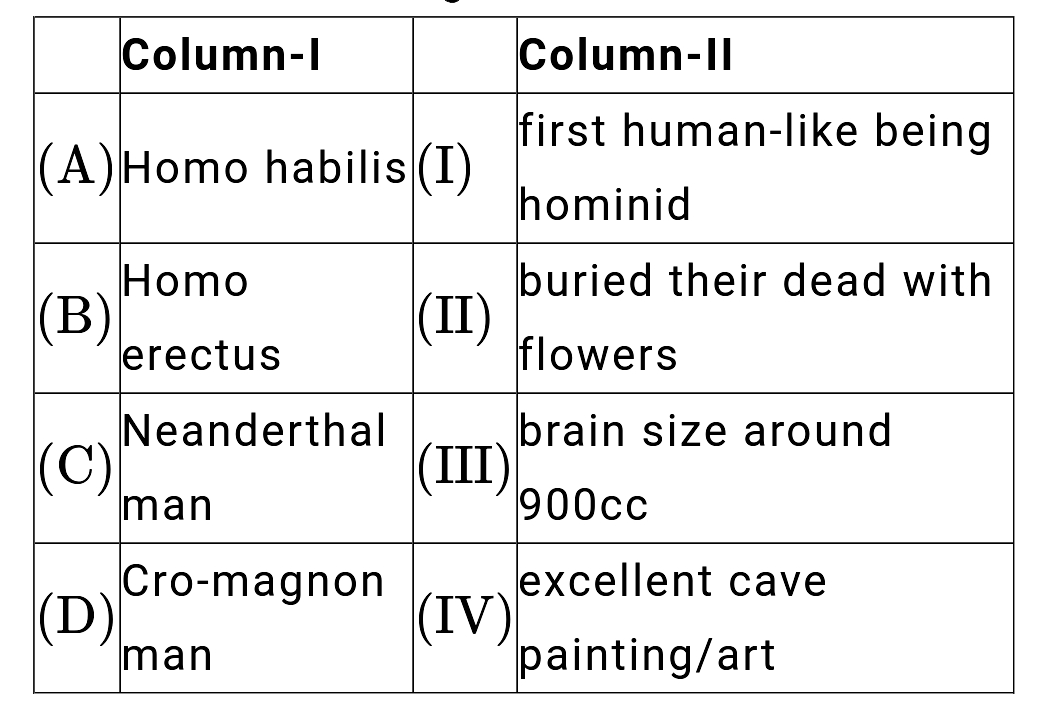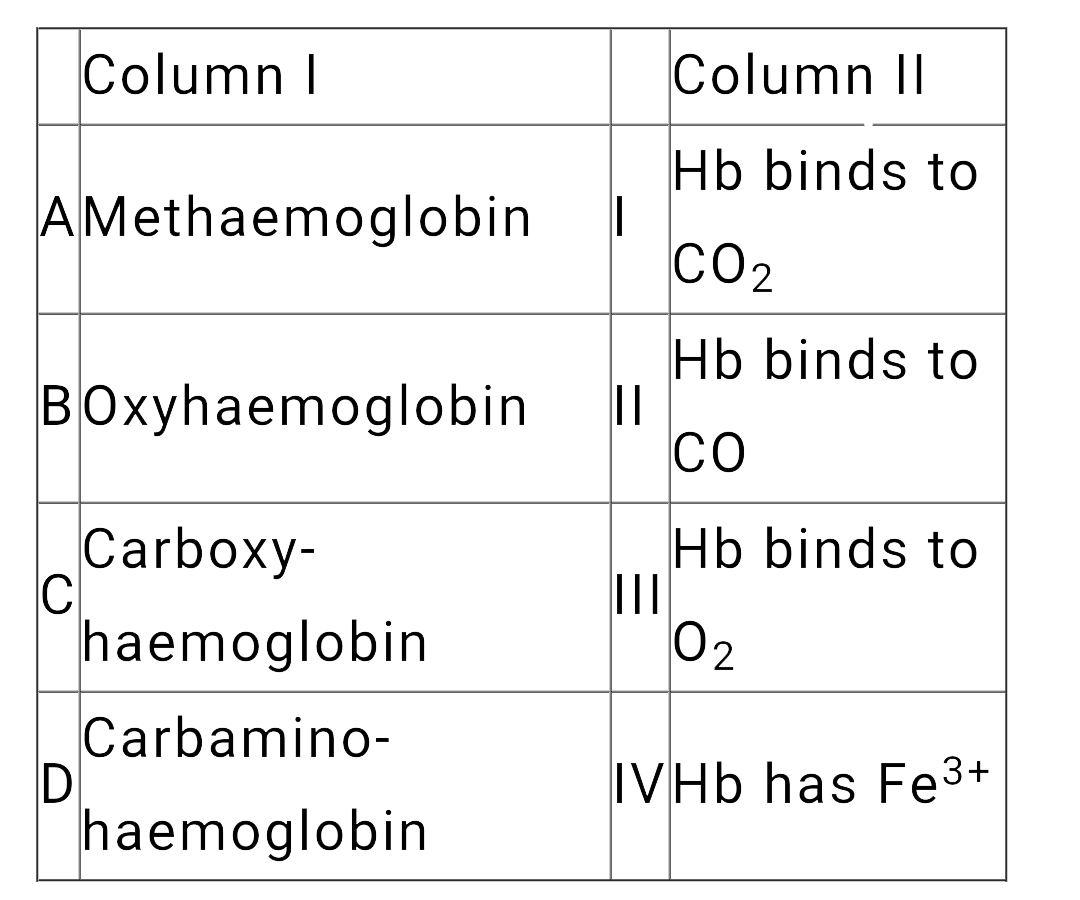Match the following Column -I Column -II (A) Aerosol (p) Optical property(B) Emulsion (q) Electrical property(C) Tyndall effect (r) Smoke(D) Dialysis (s) Medicines
The correct Answer is:A(r), B(s), C(p), D(q)
To solve the matching question, we will analyze each term in Column I and find the most appropriate match from Column II.
1. Identify Aerosol:
- An aerosol is a colloid in which solid or liquid particles are dispersed in a gas.
- From Column II, the option that describes aerosol is (R) Smoke. Smoke consists of tiny solid and liquid particles dispersed in air.
- Match: (A) Aerosol → (R) Smoke
2. Identify Emulsion:
- An emulsion is a mixture of two or more immiscible liquids. Common examples include creams and ointments used in medicines.
- From Column II, the option that corresponds to emulsion is (S) Medicines. Emulsions are often used in medicinal products.
- Match: (B) Emulsion → (S) Medicines
3. Identify Tyndall Effect:
- The Tyndall effect refers to the scattering of light by particles in a colloid or particles in a very fine suspension. This effect is related to the optical properties of the medium.
- From Column II, the option that relates to the Tyndall effect is (P) Optical property.
- Match: (C) Tyndall effect → (P) Optical property
4. Identify Dialysis:
- Dialysis is a process used to remove waste products from a colloidal solution by diffusion. It often involves applying an electric field to enhance the process.
- From Column II, the option that corresponds to dialysis is (Q) Electrical property, as the application of an electric field indicates an electrical property.
- Match: (D) Dialysis → (Q) Electrical property
Final Matches:
- (A) Aerosol → (R) Smoke
- (B) Emulsion → (S) Medicines
- (C) Tyndall effect → (P) Optical property
- (D) Dialysis → (Q) Electrical property
Summary of Matches:
- (A) → (R)
- (B) → (S)
- (C) → (P)
- (D) → (Q)
- An aerosol is a colloid in which solid or liquid particles are dispersed in a gas.
- From Column II, the option that describes aerosol is (R) Smoke. Smoke consists of tiny solid and liquid particles dispersed in air.
- Match: (A) Aerosol → (R) Smoke
- An emulsion is a mixture of two or more immiscible liquids. Common examples include creams and ointments used in medicines.
- From Column II, the option that corresponds to emulsion is (S) Medicines. Emulsions are often used in medicinal products.
- Match: (B) Emulsion → (S) Medicines
- The Tyndall effect refers to the scattering of light by particles in a colloid or particles in a very fine suspension. This effect is related to the optical properties of the medium.
- From Column II, the option that relates to the Tyndall effect is (P) Optical property.
- Match: (C) Tyndall effect → (P) Optical property
- Dialysis is a process used to remove waste products from a colloidal solution by diffusion. It often involves applying an electric field to enhance the process.
- From Column II, the option that corresponds to dialysis is (Q) Electrical property, as the application of an electric field indicates an electrical property.
- Match: (D) Dialysis → (Q) Electrical property
- (A) Aerosol → (R) Smoke
- (B) Emulsion → (S) Medicines
- (C) Tyndall effect → (P) Optical property
- (D) Dialysis → (Q) Electrical property
- (A) → (R)
- (B) → (S)
- (C) → (P)
- (D) → (Q)
Topper's Solved these Questions
- SURFACE CHEMISTRY Book:AAKASH INSTITUTE ENGLISHChapter:SURFACE CHEMISTRY Exercise:ASSIGNMENT SECTION - G
Explore 3 Videos
- SURFACE CHEMISTRY Book:AAKASH INSTITUTE ENGLISHChapter:SURFACE CHEMISTRY Exercise:ASSIGNMENT SECTION - H
Explore 2 Videos
- SURFACE CHEMISTRY Book:AAKASH INSTITUTE ENGLISHChapter:SURFACE CHEMISTRY Exercise:ASSIGNMENT SECTION - E
Explore 5 Videos
- STRUCTURE OF ATOM Book:AAKASH INSTITUTE ENGLISHChapter:STRUCTURE OF ATOM Exercise:ASSIGNMENT ( SECTION -J) Aakash Challengers Questions
Explore 12 Videos
- TEST 1Book:AAKASH INSTITUTE ENGLISHChapter:TEST 1Exercise:EXAMPLE
Explore 134 Videos
Similar Questions
Match the following (Column I with Column II)

View SolutionMatch the following (Column -I and Column II)

View SolutionMatch the following (Column I with Column II).

View SolutionMatch the following column I with column II :

View SolutionMatch the following column I with column-II :

View SolutionMatch the following column-I and Column-II-:

View SolutionMatch the following Column I with column II:

View SolutionMatch the following columns I with column II.

View SolutionMatch the following Column I with Column II

Code
View SolutionMatch the following (column-I with column-II)

View Solution